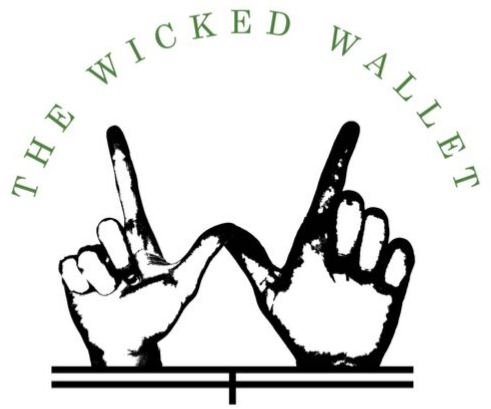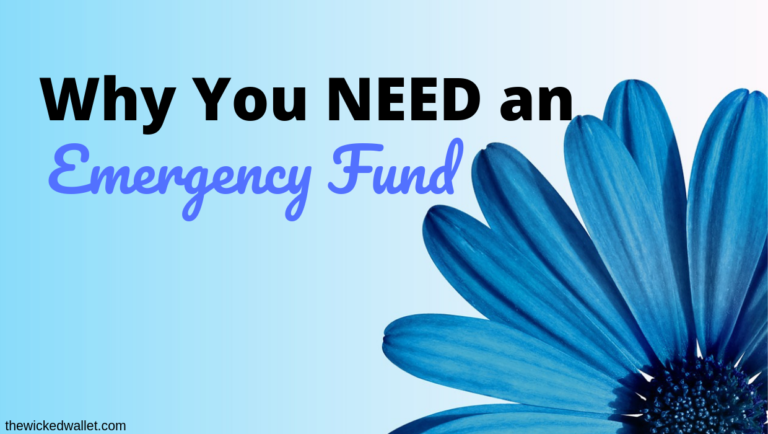Emergency Fund
Here is yet another topic that should be discussed before kids graduate high school, but only a lucky few ever actually learn about.
An emergency fund is exactly what is sounds like, a fund for emergencies. A certain amount of money set aside from your normal savings account that is your “cushion” in case something bad happens.
Whether a sudden home repair, unexpected car issue or loss of employment, an emergency fund gives you peace of mind during these sometimes disastrous events. During these times, your emotions may be high, so set yourself up for success by giving yourself extra cushion in case of the worst.
Amount Needed
Financial Planning text books will say you need at least 3 months of living expenses set aside but that 6 months is the most ideal. The amount represented in your living expenses should include absolute necessities and therefore is non-discretionary or mandatory for your life.
Non-Discretionary expenses can include things like rent or mortgage payments, utilities, insurance payments, transportation costs, debt payments, groceries, etc.
It would be wise to cut back on any or all discretionary expenses if you ever find yourself in the situation where you need to be living off of your emergency fund.
Type of Account
Since the money is meant for emergencies, normally during an emergency you would need the money right away. Therefore, it is vital to ensure that this money is liquid and accessible at all times.
A good strategy is to keep this money in a high-yield savings account and to make sure it is in a completely separate account than your normal savings. By keeping it in a different account you are helping to fight the temptation of wanting to spend that money on something other than an emergency.
This article by Nerd Wallet outlines the 10 Best High-Yield Online Savings Accounts of 2019. These would all be great options to keep your emergency fund.
If you already have started or completely funded your emergency fund, make sure you are using an account that is giving you some sort of advantage. Don’t leave any money on the table! There is even the option of using one of these bank accounts listed by Nerd Wallet that have the best bonus offers for April 2019.
Remember that this account is meant to be your support in a time of need. Do not dip into it for any reason other than an emergency.
It might even be worth it to make a list of all of the situations where you allow yourself to withdraw from the account. Just be sure to stay strict to your list!
How to Start An Emergency Fund
Start small. If you have money leftover after expenses are paid every month, put a portion of that towards a separate account and continue to do so diligently every month until you at least have 3 months worth of living expenses saved.
Fun Fact – This extra saving would also count towards your savings rate, giving you a great boost and helping you save more!
Once you make it to three months, you could lower the portion if necessary but if you are able to comfortably put a significant amount into your emergency fund each month, then continue doing so until you reach your 6 month goal.
You could also set up an automatic contribution to a separate account that reoccurs on a monthly basis. This would ensure that you don’t accidentally forget to transfer the money or you don’t accidentally spend the money.
If you’re like me and would rather just have an app do all the work for you, I would highly recommend using Digit. Digit helps you save towards specific events or funds that you specify within the app.
If you allow Digit to do so, then it will set up a monthly automatic transfer that adjusts to your living expenses and spending habits. It formulates what your money needs are and pulls a certain amount away from your bank account and puts it into your designated emergency fund.
Digit holds your money for you, so you don’t have to go through the hassle of setting up a whole new bank account. It is FDIC insured up to $250,000 and is currently supports 2,500 banks and credit unions within the US.
You can withdraw from Digit 24/7 and when you save for 3 consecutive months, your account is rewarded with a 1% annualized savings bonus, which gets deposited into your account automatically.
Check out Digit if you are looking to get rewarded for all of your good saving habits! Your first 30 days are free, after that there is a very small fee of $2.99 charged each month but if keep saving and hitting the 3 month consecutive bonus then it is totally worth it.
If you’re like me and love free money, Digit is offering a deal where you can sign up through this link and get $5 free towards your savings goals! That means you are $5 closer to your emergency fund!
Check out this article to find out how to make free money that can help you save more!
Other Tips
By keeping your expenses low and sticking to a budget, you will be able to save up a good emergency fund in no time at all. For ideas on how to minimize your expenses and budget, read this article that outlines tips from the top 7 finance bloggers!
An emergency fund becomes even more critical if you already have monthly obligations such as loan pay downs. It ensures that you don’t have to drown yourself in more debt (credit card or loans) if an emergency comes up.
Banks do not label accounts as emergency funds. You will have to take it upon yourself to label it that if you would like. An emergency fund is just a savings account.
Side hustles will help you reach your saving goals quicker by bringing in extra money that can be put towards this fund. Also, a side hustle can help diversify your income so that if you were fired, you wouldn’t be solely withdrawing from your emergency fund. Instead, you could be partially living off your side hustle income.
Check out this article for some side hustle ideas to start today!
If you feel as though you don’t have any more money to even start an emergency fund then start even smaller. Spare change in your couch/car or small bills can be put into a jar that you see every day to remind yourself that you are saving for a cushion to help you in times of need.
Keep in mind, this emergency fund is for your personal use. This isn’t an emergency fund for a rental property or side business. We have a completely separate emergency fund for our rental property that is to only be used in the case of repairs, vacancies, etc.
Final Thoughts
By using the 3-6 months of living expenses rule of thumb you will be able to really cushion yourself for any drastic emergencies. If you stick to your budget and set aside an amount every month, you will be able to have an emergency fund built up in no time. Let us know in the comments if you have an emergency fund or any extra tips to share!
Oh and don’t forget to sign up for Digit here and claim your $5 reward for joining!



